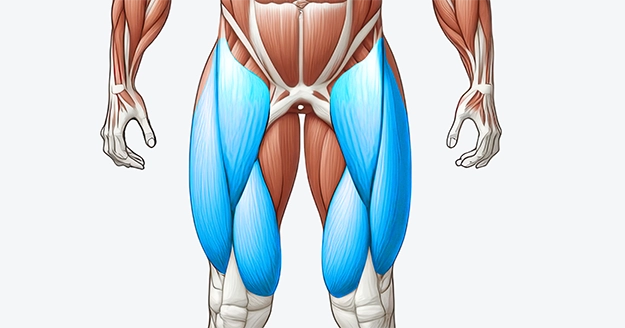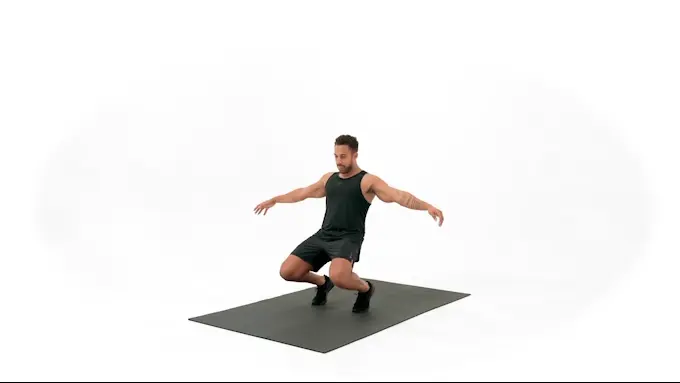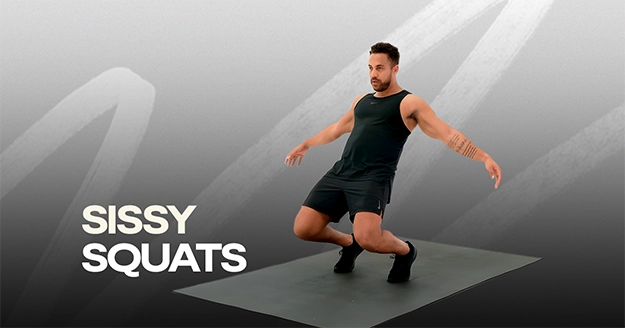Exercise Profile
Sissy Squats Overview
Unlike a standard squat that hinges at the hips, the sissy squat targets the quadriceps by bending at the knees and leaning back. Because it’s challenging to perform without support, many people use equipment to stabilize their bodies and make it easier to master the movement.
While the exercise requires balance and control, starting with assisted variations or using a support structure can make it more manageable. Sissy squats are a great way for beginners to target the quadriceps and improve lower body strength. Due to their demanding nature, sissy squats are also great for individuals with moderate to advanced fitness levels.
Therefore, sissy squats are a valuable addition to a comprehensive leg training routine, especially for those looking to challenge themselves and diversify their workout regimen.

Sissy Squats Instructions
Step 1: Take a hip-width stance. For support, you can place your arm against a wall or rack to get a better sense of how to do sissy squats correctly.
Step 2: Maintain a neutral spine by keeping your chest up, chin tucked in, and back straight. Stay on the balls of your feet to support your weight.
Step 3: Deep squat down by bending only at the knee. Your head, shoulders, hips, and knees should all be aligned. Movement should only occur from your knees down to the ankles.
Step 4: Your heels should rise off the ground as you squat, and your knees should extend past your toes. Continue until your hamstrings are touching your calves.
Step 5: Once more, simply move at the ankle and knee joints as you push off the ground with the balls of your feet until you achieve complete knee extension.

Common Sissy Squats Variations
These are a few popular sissy squat form variations that can help target the quadriceps differently and provide additional challenges:
Sissy Squats Tips
- Try to lift your arms in front of you to help keep your balance.
- Keep your grip light while using support to allow your quads to do most of the work.
- Engage your quadriceps to stand up rather than flailing your arms or rocking your shoulders.
Sissy Squats Common Mistakes
- Incorrect Knee Alignment: Letting the knees cave inward or move excessively forward can lead to discomfort and injury.
- Overgripping the Support: Relying too much on the support structure to help with the lift can reduce the effectiveness of the exercise.
- Bouncing at the Bottom: The risk of injury increases by bouncing or employing momentum at the bottom of the squat.
Frequently Asked Questions
Are sissy squats suitable for beginners?
While sissy squats can be challenging, beginners can start with assisted variations or use support to help maintain balance before progressing to unassisted versions.
How can I make sissy squats easier?
You can simplify sissy squats by holding on to something for support and balance, limiting the range of motion, or starting with modified versions like kneeling sissy squats. Practicing these variations can help you build strength and confidence before progressing to full sissy squats.
Can sissy squats cause knee pain?
If performed incorrectly, sissy squats can strain the knees. It’s essential to maintain proper form, keep the knees aligned with the toes, and engage the core to minimize discomfort.
Post your post-workout selfies in IG and tag @trainestapp, #trainest, or DM them to us to get a shoutout on Trainest Stories!


